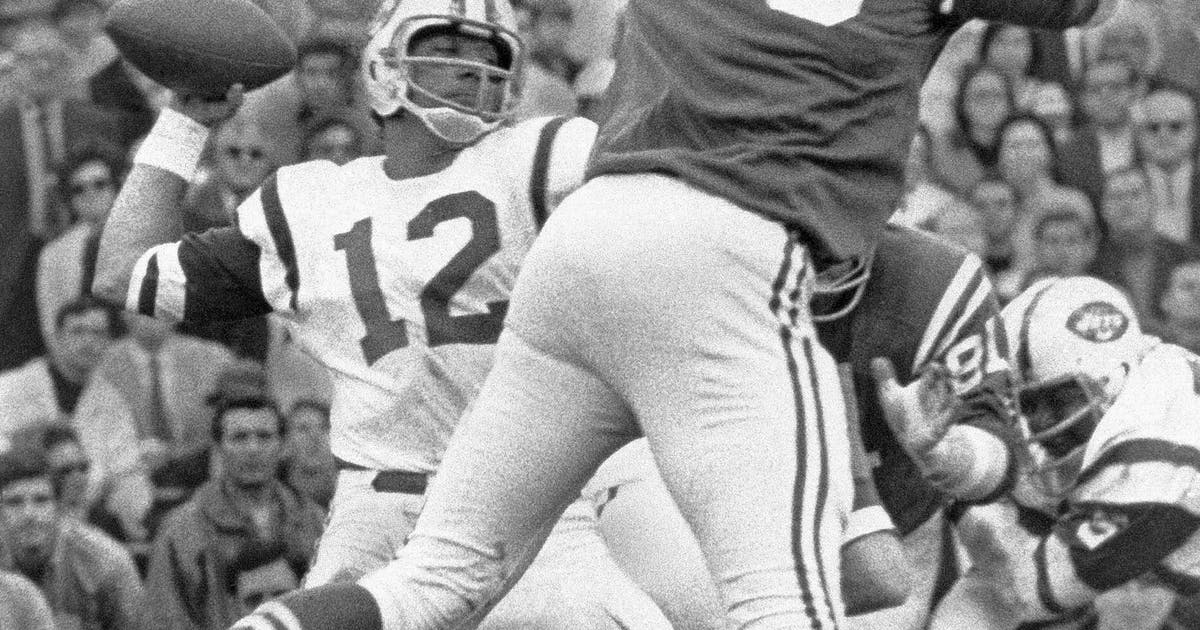From Akron to Alabama, NFL has taken show on the road


Just over 50 years ago, halfway through the history of the NFL, the New York Jets completed one of the most unexpected championship seasons in the history of the sport.
A brash quarterback named Joe Namath helped engineer a Super Bowl victory over the heavily favored Baltimore Colts.
That now-famous journey by Broadway Joe and the boys through the AFL that ended in triumph in Miami took a lesser-known detour for the second week of the schedule.
Yes, the Jets once landed in Birmingham, Alabama.
Their opponent on Sept. 22, 1968, was the Boston Patriots, who moved their home opener more than 1,000 miles south of Fenway Park even though the Red Sox were playing their game that day on the road. The legend has it that AFL leaders steered the Jets-Patriots game there to test Alabama’s taste for a professional team in the heart of college football country, eyeing a potential new home for the fledgling franchise. Legion Field, built in 1927 and often referred to as “The Old Gray Lady,” has been best known for all those Iron Bowl games over the years between Alabama and Auburn. But for this weekend the big draw was on a Sunday afternoon, not a Saturday.
The AFL-NFL merger was already in the works, eventually completed after the 1969 season, and every team was facing a requirement of a stadium with at least 50,000 seats. Fenway Park wasn’t nearly big enough, so the Patriots were in a tenuous spot.
Just think: Bill Belichick and Tom Brady conceivably could have called Birmingham home during those six Super Bowl title runs.
Instead, the Patriots stayed put in Massachusetts for a suburban site in Foxborough. Thus, Legion Field never hosted another major league game. The Jets, featuring Namath, the former Crimson Tide star, were a natural draw as the opponent. They produced a 47-31 victory in front of an announced crowd of 29,192, with one of Namath’s two touchdown passes that afternoon going to eventual fellow Pro Football Hall of Fame member Don Maynard.
The story of the league’s first century has been largely set in classic venues like Lambeau Field and the Polo Grounds or a modern-era building such as the Superdome. But the fabric of the league has been sewn together, too, by dozens of off-the-radar sites forever etched in the record books.
According to the database compiled by research website Pro Football Reference, 166 stadiums have hosted at least one regular season or postseason game since the inception of the NFL in 1920. That includes rival leagues — the All-American Football Conference (1946-49) and the American Football League (1960-69) — that were eventually absorbed. One hundred of those venues have hosted 17 games or more.
That does not factor in Tom Benson Hall of Fame Stadium in Canton, Ohio, the birthplace of the NFL where an exhibition game is still annually held around Hall of Fame induction weekend. There are many more of those far-flung locales, from Pendleton, Oregon, to Sioux Falls, South Dakota, that have staged preseason contests over the years, and can stake a small claim to the history of the league. Here is a glance at some of the other off-the-main-grid sites of NFL games over the years:
TRIANGLE PARK: DAYTON, OHIO
The first game in NFL history took place at Triangle Park in Dayton, Ohio, on Oct. 3, 1920, to launch what was originally called the American Professional Football Association. The Triangles beat the Columbus Panhandles 14-0. According to the Dayton Daily News, a total of 4,000 fans paid $1.75 for admission, and the players took home $50.
RUBBER BOWL: AKRON, OHIO
One of the numerous Depression-era public works projects to serve as an NFL host, a decrepit version of the Rubber Bowl was demolished in 2018 after 78 years as a source of Rust Belt pride. With a name inspired by the local tire industry, the stadium served as the venue for the only win in Dallas Texans history. This was the 1952 version, a franchise that wound up in Baltimore as the Colts, not the AFL sequel that begat the Kansas City Chiefs.
Well, these Texans played the Chicago Bears on Thanksgiving Day in 1952. According to Gil Brandt, the longtime Dallas Cowboys administrator and now an unofficial NFL historian who will enter the Pro Football Hall of Fame next week, the pair of high school games played as the supposed undercard drew about 30,000 people. The announced crowd for the 27-23 victory by the Texans over the Bears was one zero short: 3,000. The actual attendance was likely less than half of that, and players were ordered into the stands afterward to personally thank the fans for coming. The Texans went 1-11 that year.
BROADMOOR STADIUM, COLORADO SPRINGS, COLORADO
Ticket sales were difficult during the Depression era, so moving around the country was not uncommon. The first NFL game played in a western state was in Colorado Springs, Colorado, at Broadmoor Stadium between the Cleveland Rams and Philadelphia Eagles to close the 1939 season. The Rams, who moved to Los Angeles seven years later, won 35-13.
YALE BOWL, NEW HAVEN, CONNECTICUT
Renovations at Yankee Stadium forced the New York Giants to play the 1973-74 seasons Ivy League-style at the Yale Bowl in New Haven, Connecticut. Crowds were strong in 1973, but during a 2-12 finish by the Giants in 1974, attendance suffered a steep dropoff.
ROGERS CENTRE, TORONTO
The Buffalo Bills staged an ill-fated series of games across the border, playing once per season from 2008-13 at Rogers Centre, the once-space-age stadium built for baseball as the SkyDome just a two-hour drive from the team’s home at New Era Stadium. Attendance was paltry, with the final installment drawing 38,969 on Dec. 1, 2013, for a 34-31 victory by the Atlanta Falcons over the Bills.








